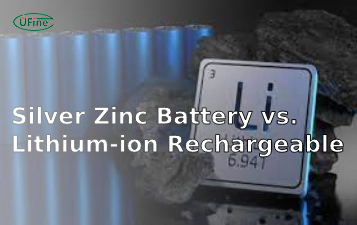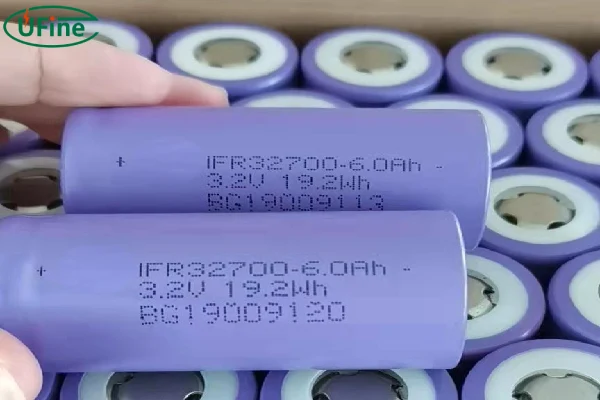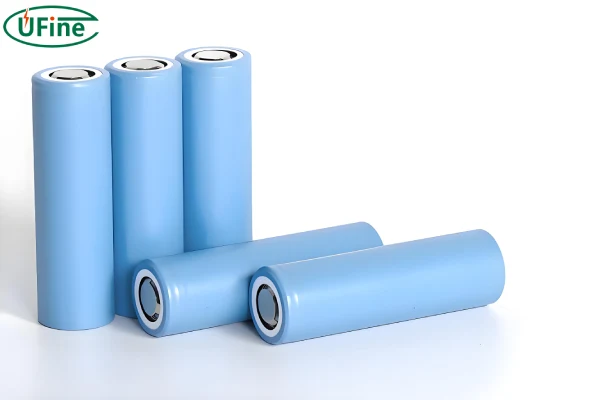
Part 1. What is a 32700 battery?
In the simplest terms, a 32700 battery is a type of rechargeable cylindrical cell, primarily known for its larger size and impressive capacity. These batteries are significant because they pack a punch in terms of power and energy storage. The name “32700” is derived from the battery’s dimensions: it measures 32mm in diameter and 70mm in length.
So, what makes the 32700 battery a standout choice? Well, there are several reasons why these batteries are gaining popularity:
- High Capacity: One of the most notable features is their high capacity. This means they can store a significant amount of energy, making them ideal for devices that require a lot of power over a longer period.
- Long Cycle Life: Another key advantage is their longevity. These batteries can be recharged numerous times without quickly losing their capacity, which translates to a longer overall lifespan.
- Stable Voltage: They provide a stable voltage output, ensuring that your devices run smoothly without sudden drops in power.
- Safety: Particularly, the LiFePO4 versions are known for their safety and reliability. They are less prone to overheating and other safety issues that can plague some other types of batteries.
Part 2. Size
When it comes to size, the 32700 battery is on the larger side compared to other cylindrical batteries like the 18650 or 21700. Specifically, it measures 32mm in diameter and 70mm in length. This larger size allows for greater capacity and energy storage, which is one of the key benefits of using these batteries. However, their size also means they are a bit bulkier, which is something to consider depending on the application.
Part 3. Voltage
Voltage is a critical aspect of any battery, and the 32700 is no exception. The voltage of a 32700 battery varies depending on its chemistry. For instance:
- A 32700 LiFePO4 battery typically has a nominal voltage of 3.2V.
- A 32700 lithium-ion (Li-ion) battery usually has a nominal voltage of 3.7V.
Understanding these voltages is crucial because it affects how the battery can be used and what devices it is compatible with. For example, some devices are designed to work with a specific voltage range, and using the wrong voltage can lead to poor performance or even damage the device.
Part 4. Weight
Given their larger size, 32700 batteries are relatively heavy compared to smaller cells. On average, a 32700 battery weighs around 145-160 grams. This weight can vary slightly depending on the specific chemistry and manufacturer. The heavier weight is a trade-off for their higher capacity and longer life, but it’s something to keep in mind if you’re using them in portable applications where weight is a factor.
Part 5. Chemistry
The chemistry of a battery determines many of its characteristics, such as voltage, capacity, and safety. For 32700 batteries, the most common chemistries are:
- Lithium Iron Phosphate (LiFePO4): Known for its safety and long cycle life, LiFePO4 is a type of lithium-ion battery that offers stable voltage and is less prone to overheating and other safety issues.
- Lithium-Ion (Li-ion): These batteries offer higher energy density, which means they can store more energy for a given size and weight. They are lighter than LiFePO4 batteries but can be more prone to safety issues if not handled properly.
Part 6. 32700 battery types
There are different types of 32700 batteries, primarily distinguished by their chemistry. The two most common types are:
- 32700 LiFePO4 Battery: As mentioned earlier, these are known for their safety and longevity. They have a nominal voltage of 3.2V and are less prone to overheating.
- 32700 Li-ion Battery: These batteries offer higher energy density and have a nominal voltage of 3.7V. They are lighter but can be more sensitive to overcharging and physical damage.
Each type has its own set of advantages, so the best choice depends on your specific needs and the application you have in mind.
Part 7. 32700 LiFePO4 battery
Let’s dive a bit deeper into the 32700 LiFePO4 battery. LiFePO4 stands for lithium iron phosphate, a type of lithium-ion battery. These batteries are particularly popular because they offer a unique combination of safety, longevity, and performance:
- Safety: LiFePO4 batteries are known for being safer than other lithium-ion chemistries. They are less likely to overheat or catch fire, making them a reliable choice for many applications.
- Long Cycle Life: These batteries can be recharged many times without significant loss of capacity. This makes them a cost-effective option in the long run.
- Stable Voltage: They provide a stable voltage throughout their discharge cycle, which is crucial for the consistent performance of your devices.
Part 8. 32700 Battery applications
So where do you find these batteries being used? 32700 batteries are incredibly versatile and are used in a variety of applications, thanks to their high capacity and long life:
- Electric Vehicles (EVs): They provide the high energy needed for long trips and efficient performance.
- Energy Storage Systems: Ideal for storing energy from renewable sources like solar panels, ensuring you have power when you need it.
- Power Tools: Offering the high current needed for demanding tasks, making your power tools run longer and more efficiently.
- Portable Electronics: Providing long-lasting power for devices like flashlights, radios, and other portable gadgets.
The versatility of the 32700 battery makes it a go-to option for many different uses, from everyday gadgets to specialized equipment.
Part 9. How long does a 32700 cell last?
One of the most common questions about 32700 batteries is, “How long do they last?” The lifespan of a 32700 battery depends on several factors, including its chemistry, how it’s used, and how well it’s maintained.
Lifespan by Chemistry
- 32700 LiFePO4 Battery: These batteries are known for their longevity. A high-quality 32700 LiFePO4 battery can last for more than 2000 charge cycles. This means you can recharge it over 2000 times before it starts to lose capacity.
- 32700 Li-ion Battery: These typically have a slightly shorter lifespan than LiFePO4 batteries, but they still offer many hundreds of cycles. You can expect a good 32700 Li-ion battery to last around 500-1000 cycles.
Factors Affecting Lifespan
Several factors can influence the lifespan of your 32700 battery:
- Usage Patterns: How you use the battery can significantly affect its lifespan. Frequent deep discharges can shorten the battery’s life, while partial discharges can help extend it.
- Charging Practices: Proper charging is crucial. Avoid overcharging and use a charger that is compatible with your battery’s chemistry and voltage requirements.
- Storage Conditions: Storing your battery in a cool, dry place can help maintain its longevity. Extreme temperatures and high humidity can degrade the battery over time.
- Maintenance: Regularly checking your battery for signs of wear and tear, such as swelling or corrosion, and replacing it when necessary can also help extend its life.
Practical Lifespan
In practical terms, a well-maintained 32700 battery can last several years, depending on how often you use and recharge it. For example, if you use a 32700 LiFePO4 battery in an electric vehicle and recharge it daily, it could last over five years. In less demanding applications, like a backup power supply, the same battery could last even longer.
By understanding the features, types, and applications of 32700 batteries, you can make informed decisions about their use. Whether you need a reliable power source for an electric vehicle, a power tool, or a portable electronic device, knowing the ins and outs of 32700 batteries will help you choose the best option for your needs. These batteries offer a fantastic combination of high capacity, long life, and reliable performance, making them a solid choice for a variety of demanding applications. So, next time you’re in the market for a powerful and durable battery, consider the 32700 and all it has to offer.
Related Tags:
More Articles

What is the Difference Between Silver Zinc Battery vs. Lithium-ion Rechargeable?
Compare silver zinc and lithium-ion rechargeable batteries: energy density, cycle life, safety, cost, and uses in drones, medical devices, EVs, and electronics.
What are Watts and Watt Hours in Battery?
Understand watt vs watt-hour in batteries: key differences, how to calculate capacity, and why they matter. Includes free comparison table.
Best 10 Blood Pressure Monitor Battery Review: Finding the Most Reliable
Are you looking for a reliable Blood Pressure Monitor battery? Here is a complete guide with the top 10 best blood pressure monitor batteries.
Bluetooth Headphone Battery Guide: All You Need to Know
Maximize headphone battery life with expert tips! Learn how to charge, check, troubleshoot, and choose the best bluetooth headphone battery in 2025.
LiFePO4 Battery VS. Lithium-ion Polymer Battery: Which One Is Best?
Comprehensive comparison of LiFePO4 vs Lithium Ion Polymer batteries: energy density, safety, lifespan, cost. Find out which battery suits your needs in 2025.




